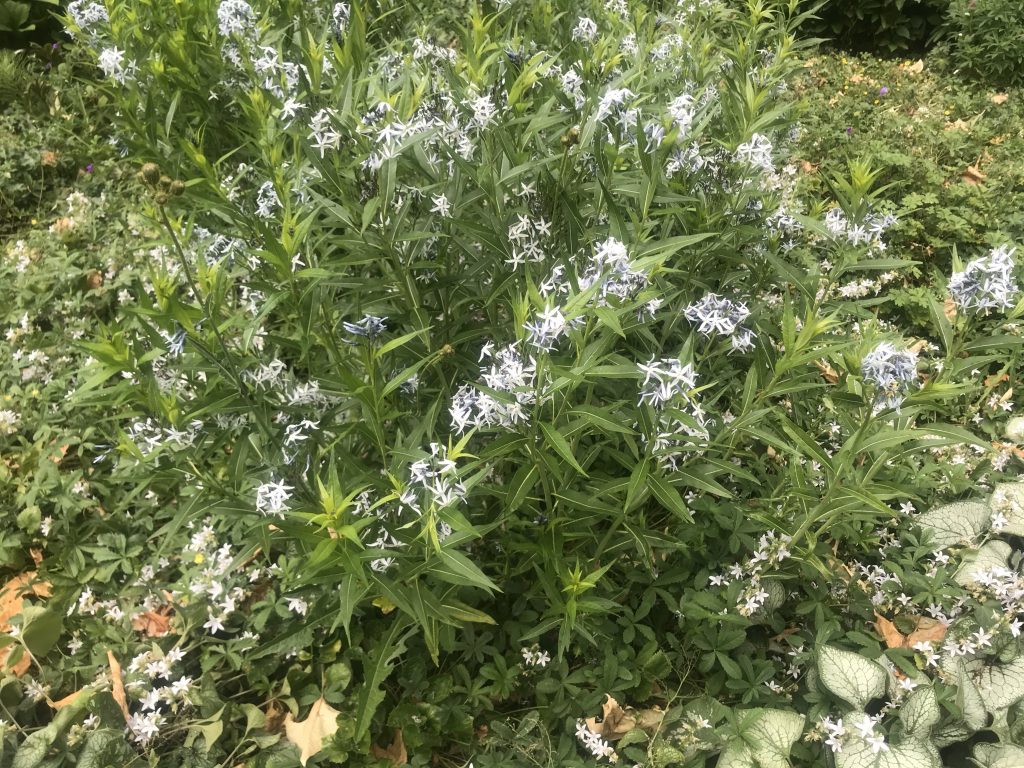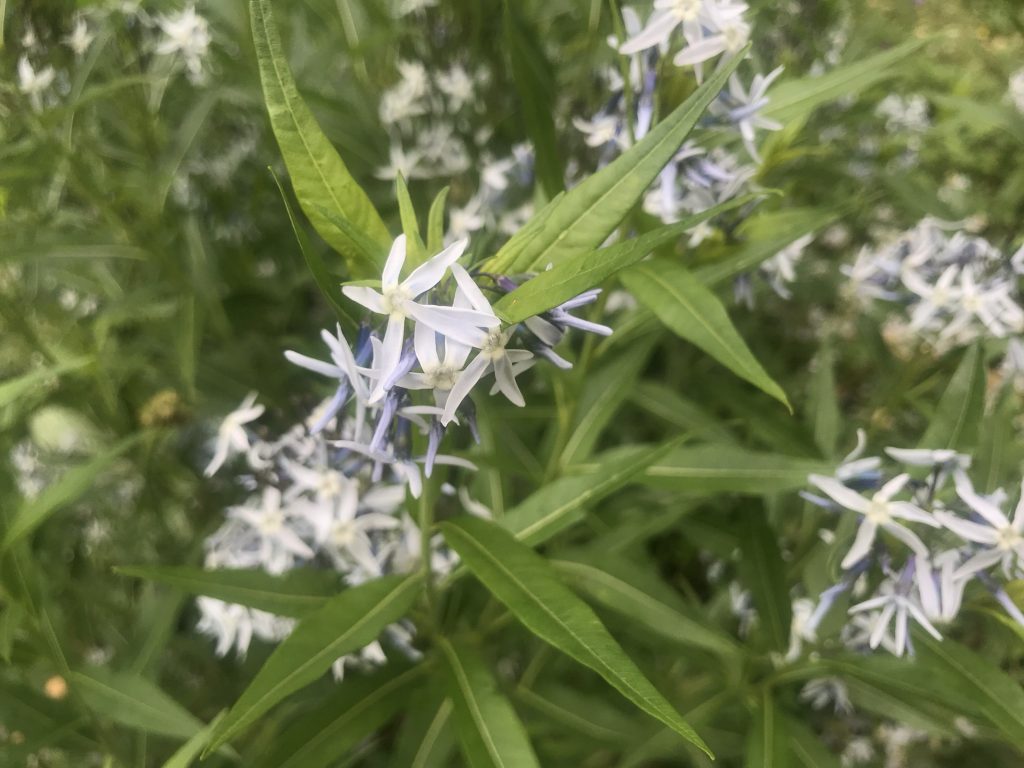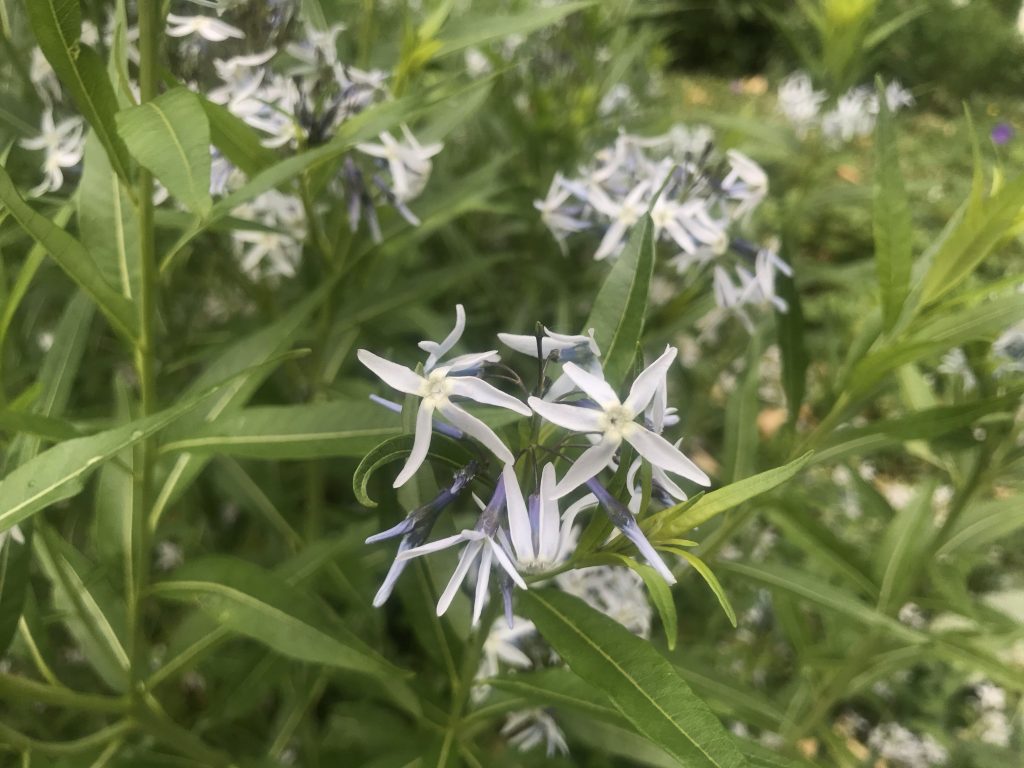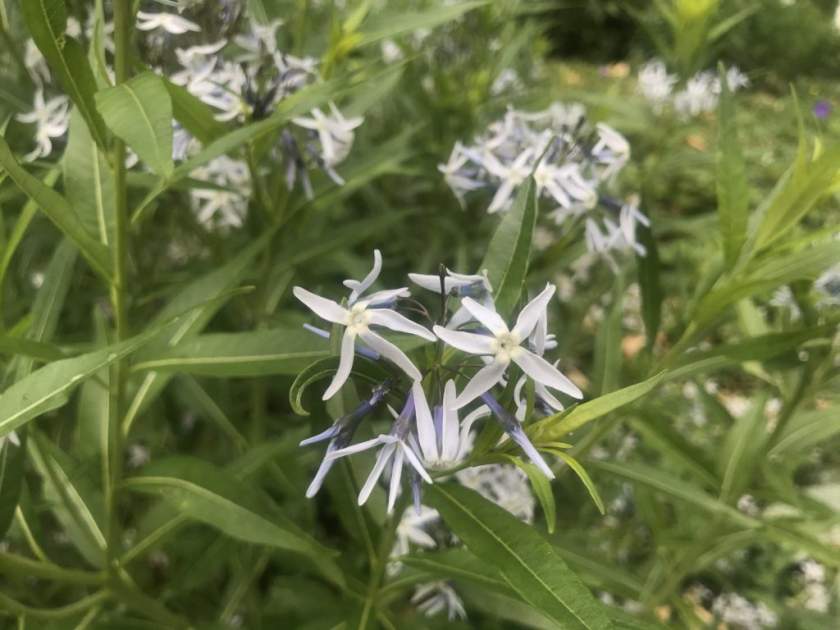Blue Star or Amsonia tabernaemontana: The Graceful Perennial Delight
Background and Characteristics: Amsonia tabernaemontana, commonly known as Blue Star, is a charming herbaceous perennial that belongs to the Apocynaceae family of plants. This delightful species is native to North America, specifically the central United States. With its graceful growth habit and enchanting light blue star-shaped flowers, Blue Star is a captivating addition to any garden or landscape. It typically reaches a height of about 90cm (3ft), creating an eye-catching display of beauty.
Flowering Season: The light blue star-shaped flowers of Amsonia tabernaemontana grace the garden in late spring, providing a delightful spectacle of delicate beauty. These ethereal blooms add a touch of elegance and allure to the landscape, attracting pollinators and enchanting onlookers.
How to grow Amsonia tabernaemontana :
Sunlight Requirements: Blue Star thrives in a variety of lighting conditions, performing well in both full sun and partial shade. When provided with adequate sunlight, this resilient plant flourishes and showcases its full potential.
Soil and Drainage: To ensure optimal growth, it is recommended to plant Blue Star in well-drained soil. While it prefers well-drained soil, it is also capable of adapting to clay soil, making it a versatile choice for various garden environments.
Watering: Once established, Blue Star exhibits a high tolerance for drought conditions. While it can withstand periods of dryness, regular watering is still necessary during prolonged dry spells to maintain its vitality and promote healthy growth.
Pruning and Staking: In full sun locations, Blue Star typically maintains a sturdy and upright habit, requiring minimal maintenance such as staking or pruning. However, when grown in partial shade, the plant may exhibit some floppiness. To encourage bushier growth and maintain an attractive form, periodic trimming is recommended.
Pest and Disease Resistance: One of the remarkable qualities of Blue Star is its natural resistance to deer and rabbits. These animals are less likely to browse on this plant, allowing it to thrive without constant protection. Additionally, Blue Star exhibits good resistance to common pests and diseases, making it a low-maintenance choice for gardeners.
Propagation: Amsonia tabernaemontana can be propagated through various methods, including division and seed sowing. Dividing mature plants in early spring or fall allows for the creation of new individuals that can be established in different areas of the garden. Collecting and sowing seeds is another viable option for propagating Blue Star, offering an opportunity to grow this enchanting perennial from scratch.

Discovery and Historical Significance:
Amsonia tabernaemontana holds a significant place in the history of botany, with its discovery and introduction credited to the English botanist, John Bartram. In 1759, during his botanical explorations in the Carolinas, Bartram was the first to collect and document this captivating plant. As a renowned pioneer in the study of North American plants, Bartram’s contributions to the field of botany were immense.
John Bartram’s passion for botanical exploration and his close friendship with Benjamin Franklin played a pivotal role in shaping the scientific landscape of his time. His collection of Amsonia tabernaemontana not only marked the plant’s introduction to scientific study but also sparked interest in the broader genus Amsonia. Bartram’s extensive contributions to the understanding and classification of North American plant species greatly influenced the scientific community.
With its graceful presence, resilience, and captivating blue flowers, Blue Star (Amsonia tabernaemontana) is a perennial delight that elevates the aesthetic appeal of any garden or landscape. Its adaptability to different lighting and soil conditions, coupled with its resistance to pests and diseases, makes it a hassle-free choice for both novice and experienced gardeners. Embrace the elegance and enchantment of Blue Star as it blooms in late spring, bringing joy and beauty to your outdoor sanctuary.






